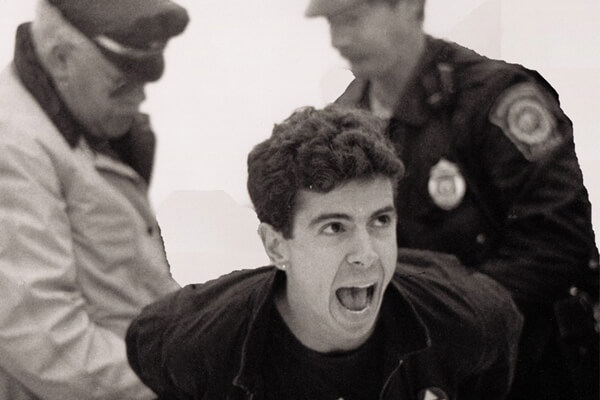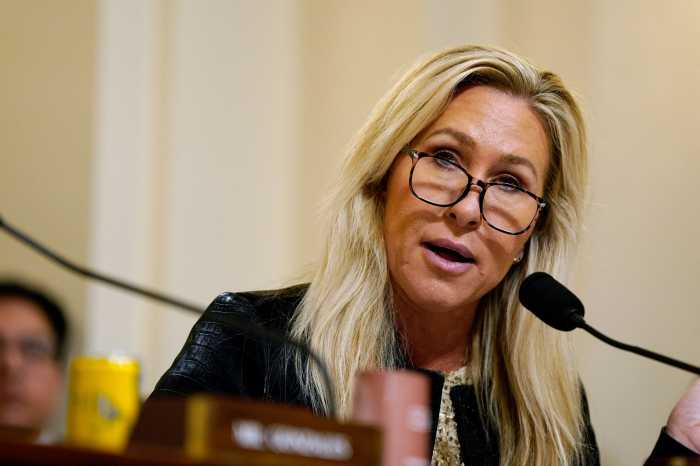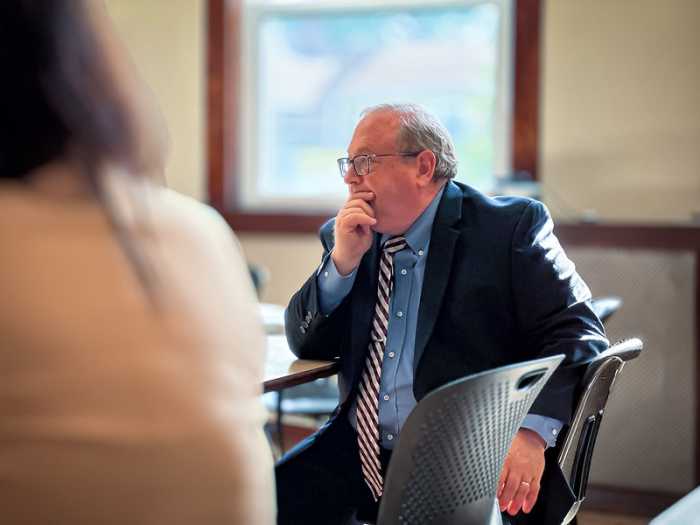(COVER ILLUSTRATION: MICHAEL SHIREY)
For gay men who lived through AIDS’ worst days in the 1980s and early ‘90s — and perhaps for those who came of age in the decade or so afterward — the opening scenes of journalist David France’s new film “How to Survive a Plague,” debuting September 21, are eerily familiar. Even much younger New Yorkers may not be altogether surprised by the grim picture they paint.
It is 1987, and we read that worldwide AIDS deaths have already reached 500,000 — a tally that will grow to 8.2 million by the time France’s story concludes on the eve of 1996. Riled up and anxious activists have gathered at the LGBT Community Center on West 13th Street at a meeting of the AIDS Coalition to Unleash Power, or ACT UP. Folks familiar to gay and lesbian New Yorkers 45 and older appear on screen. Author Liz Tracey, who went on to edit the newspaper LGNY, opens up the meeting.
The scene shifts to a City Hall press conference, where activist and documentary filmmaker Phil Zwickler is pressing Mayor Ed Koch on his inadequate response to AIDS. Koch responds that Zwickler’s assertion is “a falsehood.”
In the next scene, gay civil rights attorney David Barr is advising activists on what to expect if they are arrested in a planned City Hall demonstration. At the protest, television producer Ann Northrop is in front of cameras demanding that Koch “exert leadership.” Playwright and screenwriter Larry Kramer is — typically — more barbed: “We’re sending a message to public officials, to closeted public officials, that we won’t be shat on anymore.” We see Zwickler interviewing Jim Eigo, a playwright who is a member of ACT UP’s Treatment & Data Committee.
By 1991, Zwickler would be dead from AIDS, but the others would remain active in the fight against the epidemic to this day.
In short order, we see ACT UP members spontaneously leave the Community Center and march next door to St. Vincent’s Hospital to stage a kiss-in; we get a bird’s eye-view of the 1989 die-in at St. Patrick’s Cathedral, which proved highly divisive within the gay community and drew a defiant response from Cardinal John O’Connor; and we follow activists, also in 1989, as they take over the offices of pharmaceutical giant Burroughs Wellcome to protest the prohibitive cost of AZT, then the only available treatment for AIDS.
Filmmaker David France. | SUNDANCE SELECTS
Relying almost completely on archival footage from 31 videographers — which allows a sweeping story to be told in remarkably cogent fashion — France, at the outset, seems to be aiming for a chronicle of ACT UP’s history. The group emerged out of the combustible passions and despair of that era, and the emotions at play often divided its thousands of members as starkly as it pitted them against the political and medical establishment. Trying to tell that story comprehensively, with due attention to many dozens of important activist leaders, is a tall order — and likely a thankless task.
We soon meet a small group of “characters” whom we follow closely through France’s 109-minute film, and it becomes clear that this is their history, not the broader movement’s.
“This is not the story of ACT UP,” the filmmaker told Gay City News. “I am hoping that mine is just one of many films that will tell what happened in the plague.”
Most of the characters who dominate the film focused their activism on ACT UP’s Treatment & Data Committee and an independent group that broke off from ACT UP in 1992, the Treatment Action Group.
“I am a science writer,” France explained. “This was a story I was eager to find out about — how we got these treatments.” Then, stating plainly his thesis about the crucial role treatment activists played in the stunning turnaround that came with protease inhibitors’ introduction in 1996, he added, “This is how we got Crixivan.”
The filmmaker acknowledged that documentaries could focus on many other activists who made significant, life-saving contributions. “The bias of my own curiosity took me there,” he said of his film’s approach to AIDS history.
Activist Peter Staley in ACT UP’s early days. | SUNDANCE SELECTS
If France’s film has a lead protagonist, it is Peter Staley. When we first see him in 1987, he is a strikingly handsome young man, almost angelic in his looks. We soon find out he has an uncanny gift for speaking publicly, spontaneously articulating perfectly formed, logically compelling sentences. He tells us that as a Wall Street bond trader, he was “deeply closeted” until he was handed an ACT UP flyer on his way to work shortly after being diagnosed with what was then called AIDS Related Complex.
His mentor at work told him, “‘If you ask me, they all deserve to die because they took it up the butt.” Staley “had to just stew about it for the rest of the day,” but apparently not much longer. “I got myself to the very next ACT UP meeting.”
Despite the unflagging commitment Staley shows throughout the movie, there is also a sadness to him. “I’m going to die from this,” are the first words we hear from him. “This isn’t going to be cured for years and years.”
We see Iris Long, who had a 20-year career as a research chemist when she became engaged with ACT UP, telling the group about a conference of the American Society of Microbiology she had just attended. According to Kramer, she “just showed up, this housewife who had been a scientist, and still was, and said, ‘You guys don’t know diddly about what this is. And, anybody who wants to learn about the screwed up system, how it works, how grants are made, how the science works, how everything works, how the NIH works, how the FDA works, how you can deal with all this enormous amount of material, I’ll teach you.’” France said that when Long first became active on AIDS several years before the launch of ACT UP, she had never knowingly met a homosexual.
In one of the first scenes where we see Mark Harrington, he is running through several takes of a video in which he explains what ACT UP is. Appearing in a leather jacket and playfully riffing on whether or not he should, in the spot, be smoking a cigarette dangling from one side of his mouth, he could be making a screen test to co-star in a ‘50s movie alongside James Dean or Jean-Paul Belmondo. There’s no hint yet that he’s a Harvard graduate.
Public relations executive Bob Rafsky tells us, “I came out at age 40. It was very bad timing to come out in the middle of an epidemic.” Rafsky is the character who conveys the film’s greatest pathos. We watch him celebrate his young daughter’s birthday alongside his ex-wife over several successive years. We also see candidate Bill Clinton indignantly respond to his heckling on the 1992 campaign trail — the moment when “I feel your pain” entered America’s political lexicon — and watch Rafsky’s angry, desperate, even vengeful eulogy for Mark Fisher, the author of the manifesto “Bury Me Furiously,” outside the Bush reelection committee’s Manhattan offices on the eve of the November election.
Staley, Harrington, and Rafsky are seen throughout the film engaging in the sorts of mass civil disobedience associated in our collective memory with ACT UP. Staley is at Burroughs Wellcome. He is among the crew that drapes Senator Jesse Helms’ house with what the rabidly anti-gay North Carolina Republican describes, on the floor of Congress, as a “35-foot canvas, uh, condom.” And, at a protest at the National Institutes of Health headquarters in Bethesda, Maryland, where Harrington is interviewed, we see Staley yanked by police from a roof awning over the building’s entrance.
But just minutes later, Staley is addressing the 1990 International AIDS Conference in San Francisco, during which he ingeniously deflates the palpable tensions between frustrated activists and scientists chafing under the torrent of criticism they face. A transformational moment, it is among the film’s most stirring scenes.
We also watch Staley, Harrington, Barr, Derek Link, and others meeting in small, smoke-filled rooms where they discuss the intricacies of treatment research and protocols. If they weren’t talking about how to save their own lives and those of countless others, we might be tempted to view them as geeks. The film recounts how the treatment activists developed a formal treatment research agenda, one that government officials and other scientists slowly came around to. Pharmaceutical researchers at Merck credit the assistance that activist Bill Bahlman gave them during their very earliest protease inhibitor development efforts.
Staley, Harrington, and other treatment activists are increasingly seen elsewhere besides protest settings. Staley deftly handles a CNN “Crossfire” appearance where he sits between a hapless Tom Braden, “on the left,” and right-wing firebrand Pat Buchanan, who is surprisingly empathetic on treatment questions until he suggests that gay men who have sex are playing “Russian roulette.”
At the 1992 International AIDS Conference in Amsterdam, held after the Treatment Action Group (TAG) broke away from ACT UP, Harrington, now attired in a suit and identified as a Harvard graduate, and Gregg Gonsalves, who attended Tufts, are challenged on whether their increasingly insider activism is effective. “It’s silly to risk arrest and the hassles that are attendant upon it if you can get serious attention and negotiations going with other measures,” Harrington responds.
About the ACT UP-TAG split, Northrop says, “There was a fear, I think, that we were getting too close to the people in power, that we would compromise our own principles. And the people who were more interested in the social issues became uncomfortable with that.”
Suspicion about the TAG crowd — who were a bit too easy to paint as well-educated white boys — became particularly pronounced when the treatment activists reversed their longstanding demand for accelerated drug approval; they did so in the wake of news out of the 1993 Berlin AIDS Conference that AZT was not delivering the benefits hoped for. While Staley, startlingly, calls AZT “a waste of money for the US taypayer… [that pointed up] naïveté on our part to think that the magic bullet was out there,” Bahlman is soon seen accusing TAG of having “secret” meetings at the FDA that would slow down access to one of the earliest protease inhibitors.
France said that the ire aimed at TAG was “heartbreaking” for the treatment activists, who, he said, had concluded “they had allowed themselves to feed into a greed campaign by pharmaceutical companies, in whose interest it was to get speedy approval.” It was on this point that the filmmaker’s archival resources fall short. TAG’s rethinking of its relationship to the pharmaceutical industry is implied, but never explicitly presented in the film, a real loss to the historical record.
The period after the Berlin AZT findings was perhaps the grimmest in the fight against AIDS. We see Barr saying, “Maybe that is our future that we’re gonna watch each other die.” Staley repeats his conviction that he will not survive the epidemic. Even before Berlin, at a 1992 protest in Washington, the despair is palpable. Against the backdrop of Stuart Bogie and Luke O’Malley’s elegiac musical score, angry activists pressed up against the White House gate are seen tossing ashes of their loved ones’ remains onto the president’s front lawn.
France is certain that despite the dire mood and the factionalism with which AIDS activism was riven by 1993, Staley, Harrington, Bahlman, Link, Gonsalves, Eigo, and others would have kept up the fight even had we all not gotten “lucky,” as Barr put it, in 1996. Thank God we never had to answer that question.
But at the movie’s conclusion, when we finally meet all of the activists as they are today, we can see that the aching grief over all who were lost before we got lucky is, as France put it, “not even that far from the surface.” ACT UP, TAG, and the gay and lesbian community as a whole have much to be proud of — and that is certainly reflected in the activists’ closing comments — but each also clearly struggles with Staley’s haunting acknowledgement that “like any war, you wonder why you came home.”
HOW TO SURVIVE A PLAGUE | Directed by David France | Opens Sep. 21 | IFC Center | 323 Sixth Ave. at W. Third St. | ifccenter.com






































